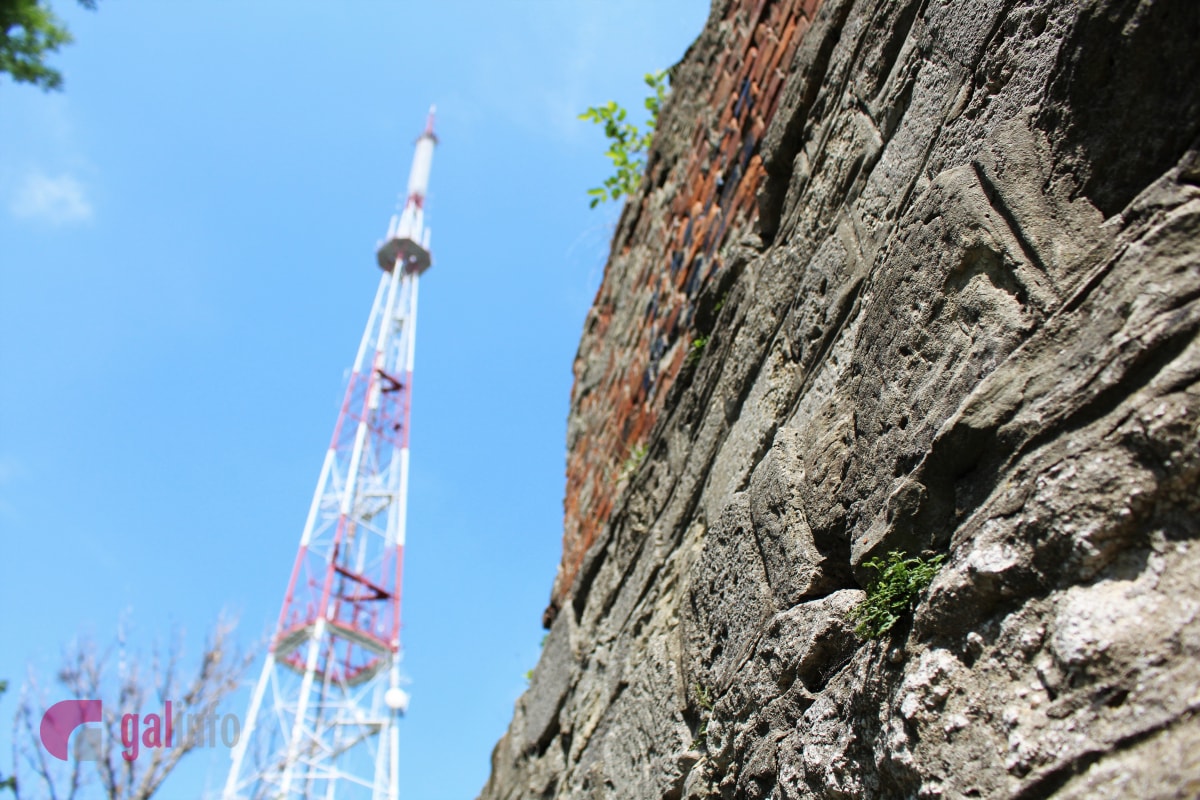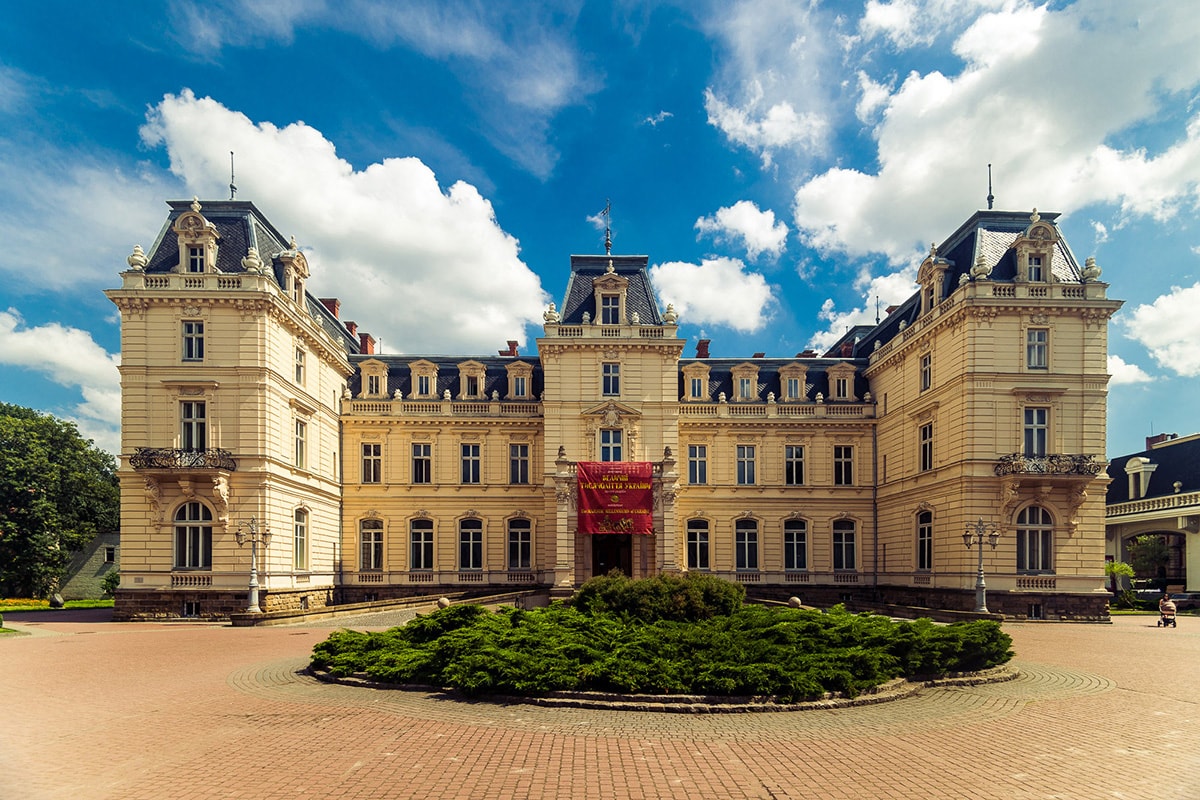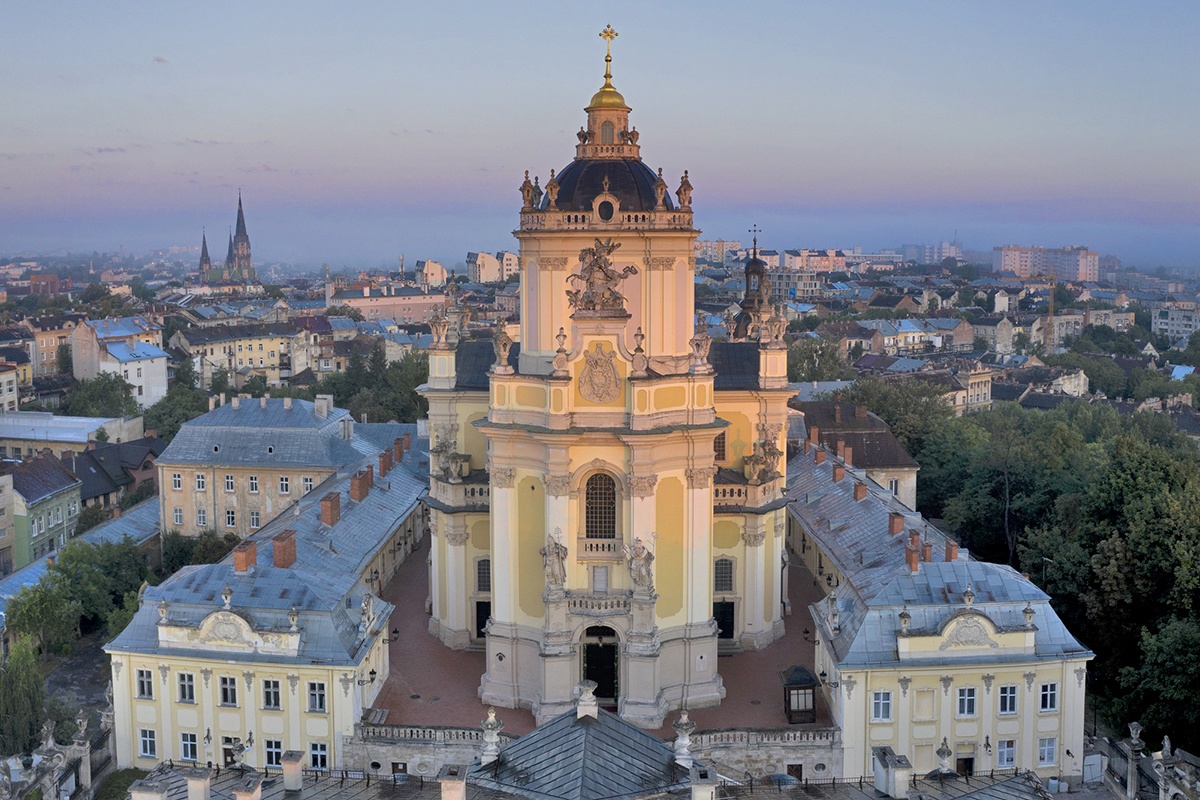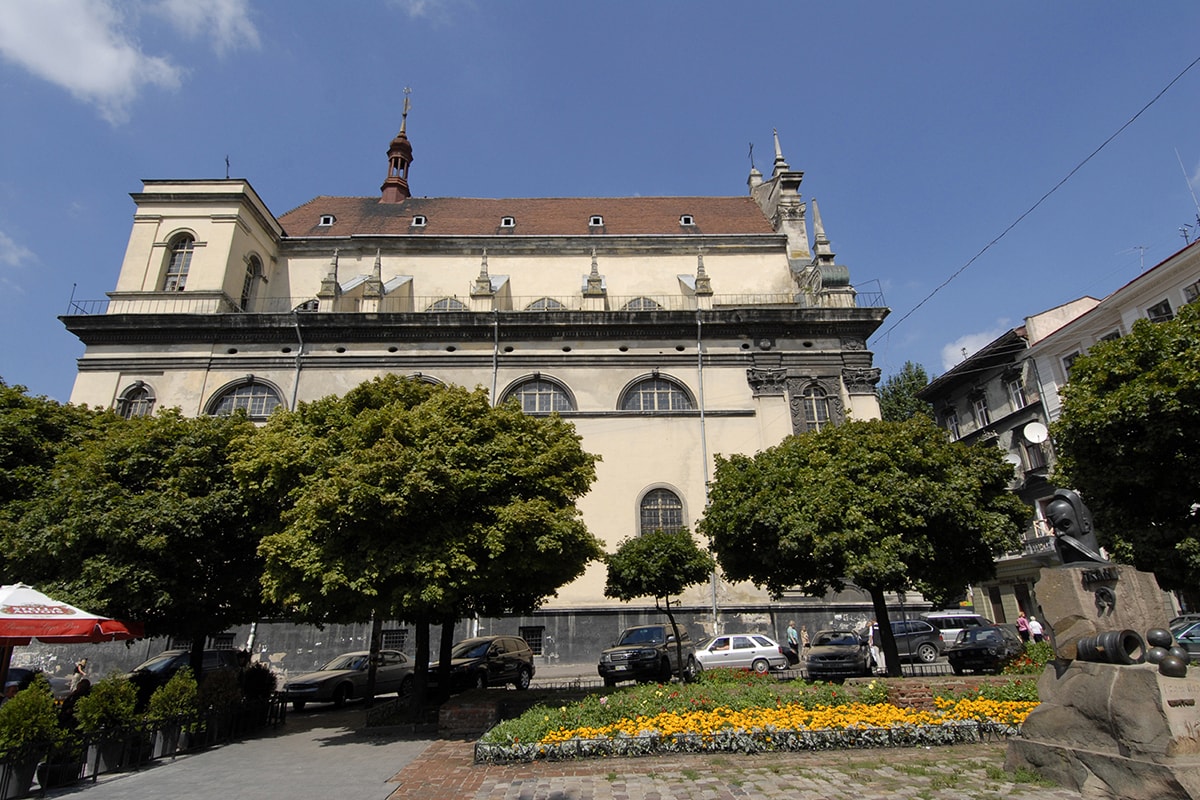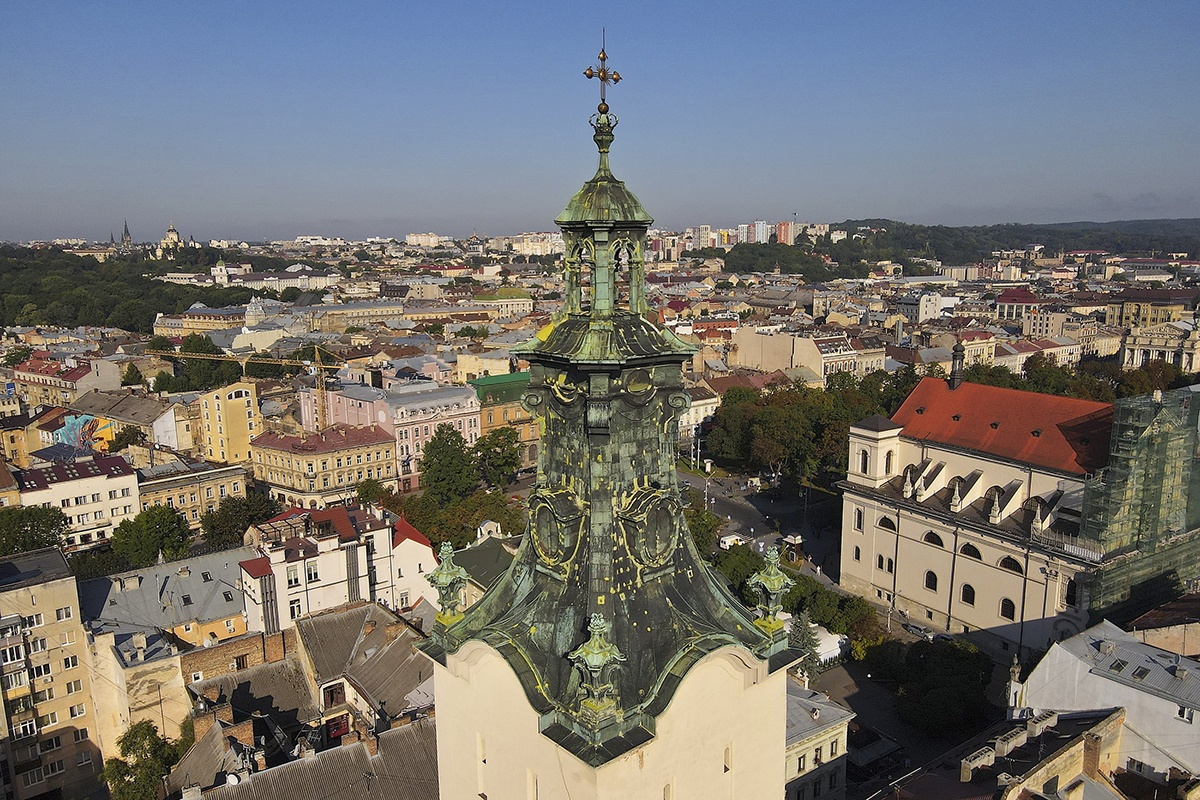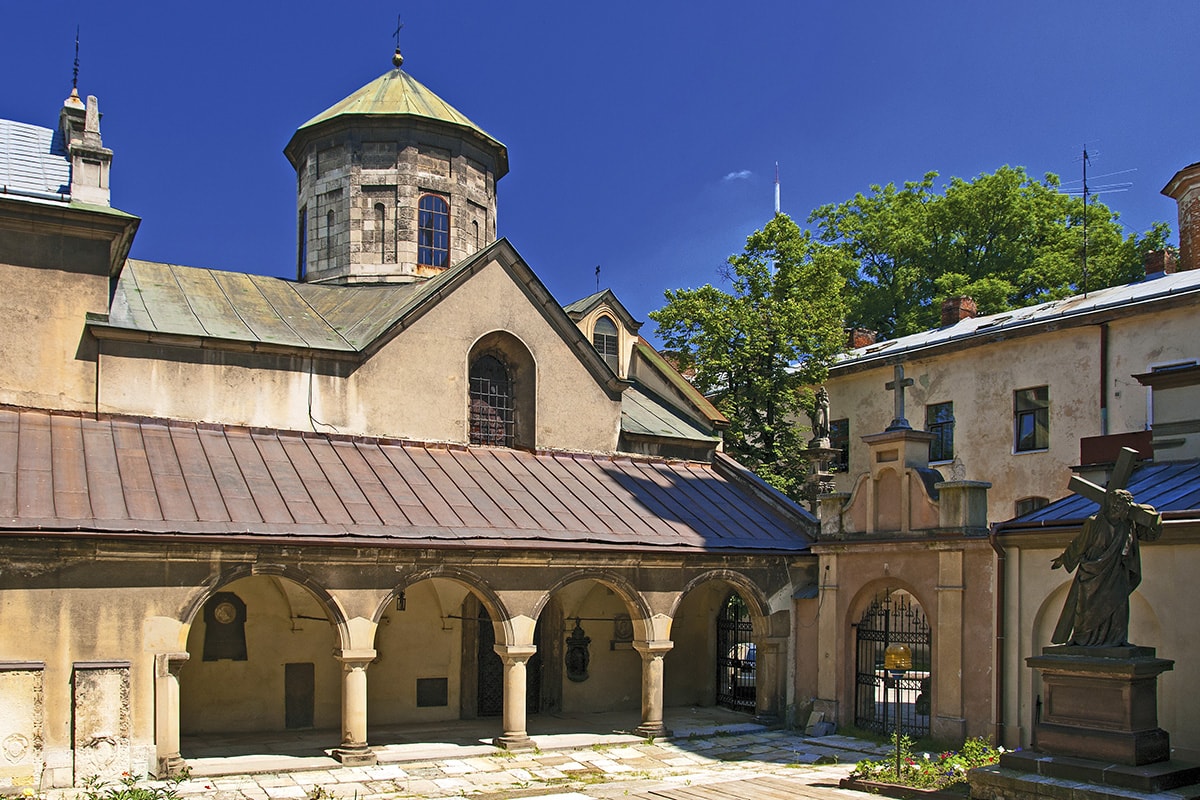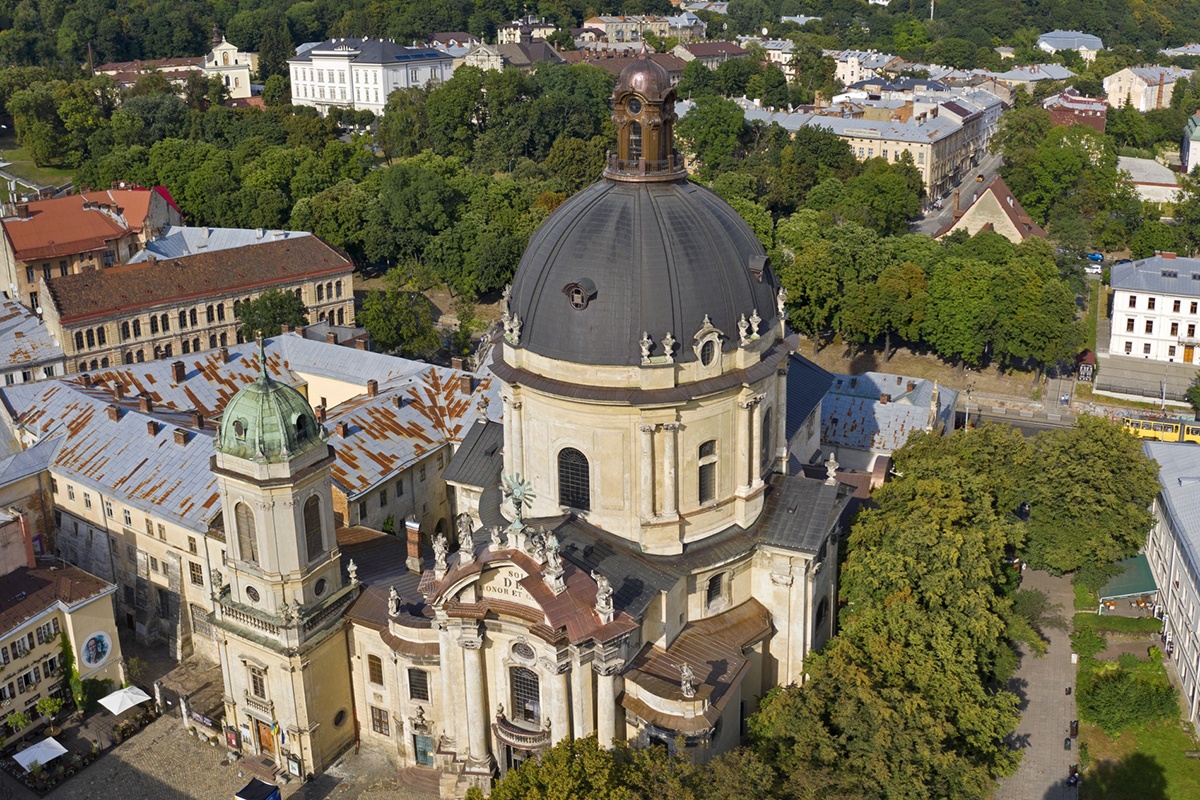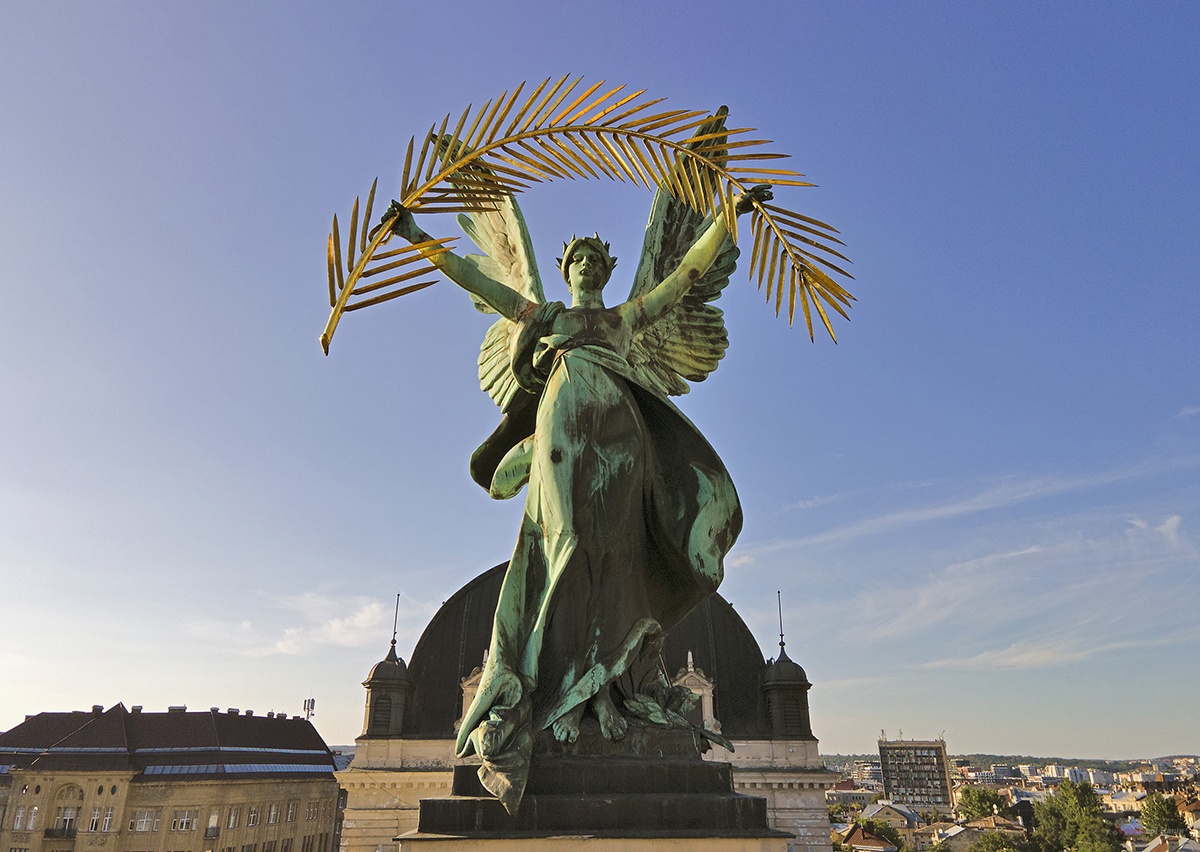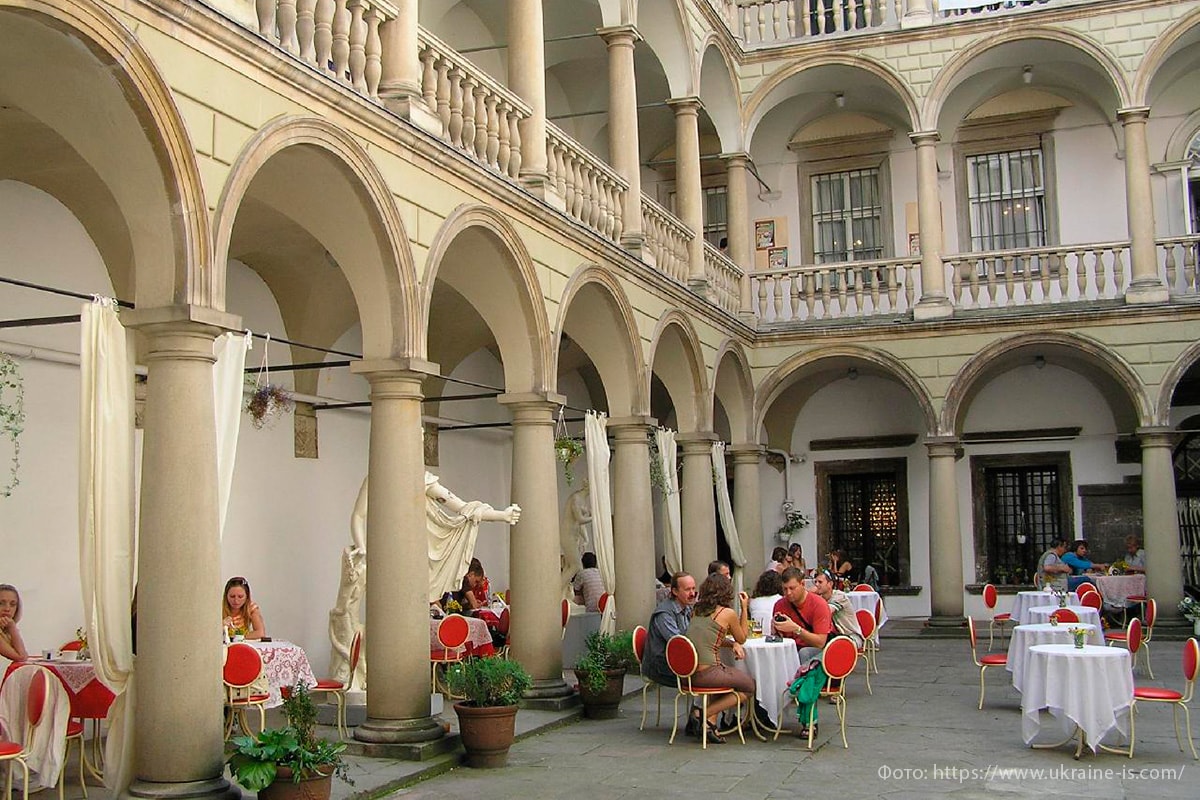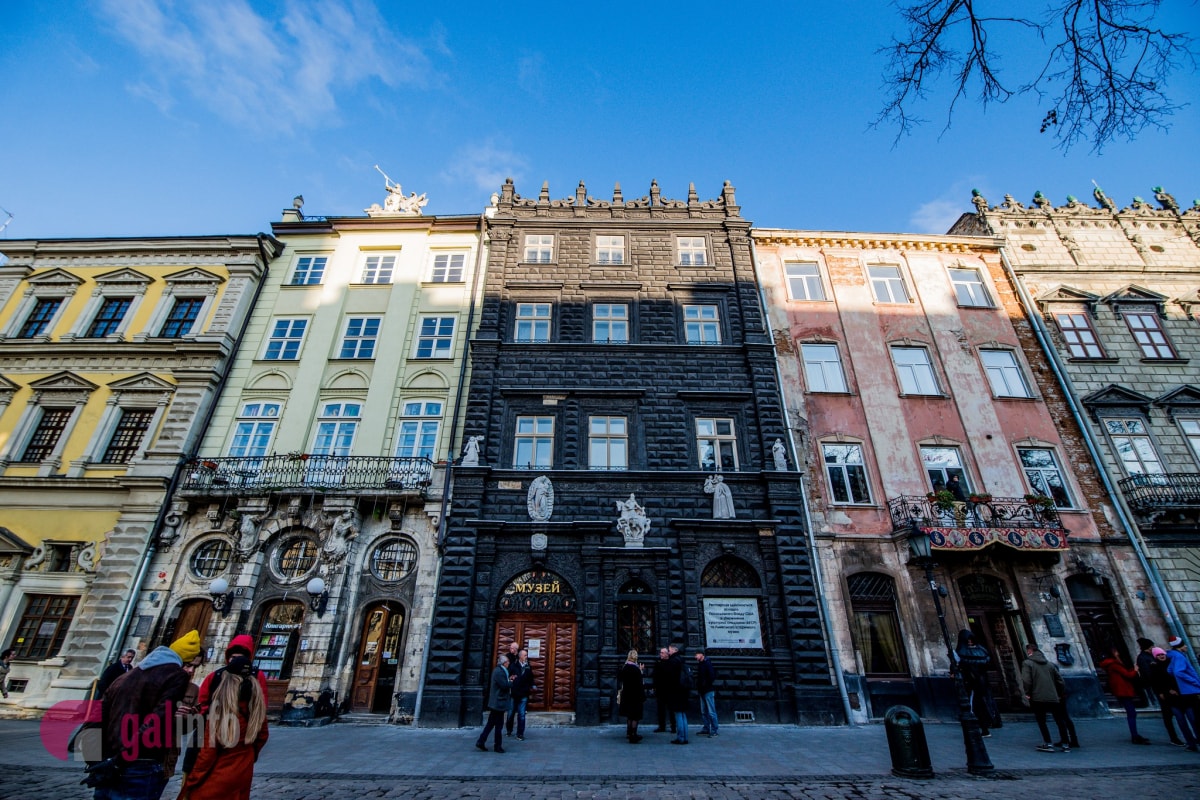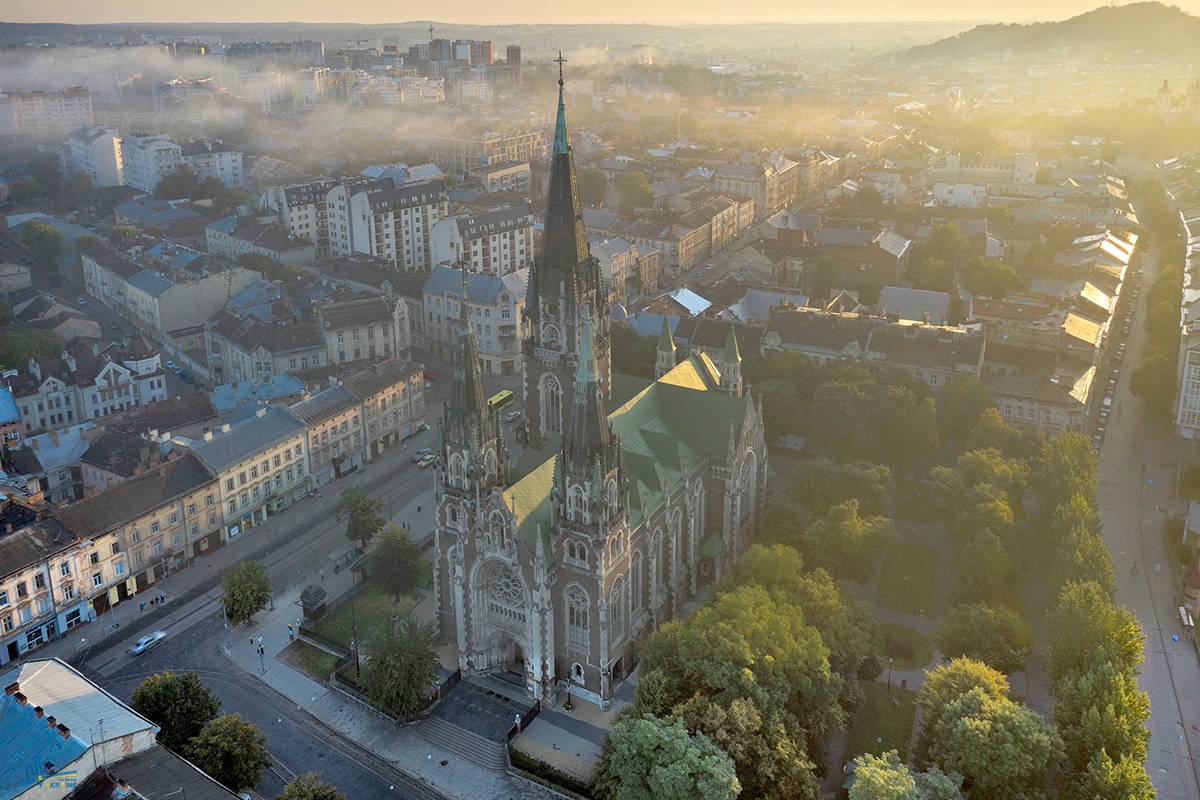
Kornyakta Tower is an architectural monument of national importance, part of the ensemble of the Assumption Church. The tower was built in the Renaissance as a bell tower of the Church of the Assumption designed by architect Peter Barbon in 1572-1578 at the expense of Lviv merchant of Greek origin Konstantin Kornyakt. Kornyakta Tower was one of the most beautiful buildings in Europe at the time.
The bell tower is square in plan, built of broken stone and surrounded by hewn stone, polychromy is used in the decoration. Connected with the northern facade of the Church of the Assumption. Vertically, the facades are decorated with pilasters of the Tuscan order with red elongated arched niches with small window openings. The height of the tiers gradually decreases, and the exact proportions found add a slender and elegant bell tower. The total height of the tower without the cross is 65.8 meters.
On the tower, before the construction was completed, a 2-meter-diameter bell, the largest bell in Galicia at the time, was erected at the request of a merchant. The tower originally had 3 tiers of different heights and a 3-tiered tent finish. In 1672 p. during the Turkish siege the bell tower was damaged by fire. It was rebuilt in 1695 p. architect Peter Beber, who completed another tier and a modern Baroque finish with four twisted obelisks at the corners.
During religious holidays, a chapel played in the gallery of the upper tier and a fraternal choir performed. The library of the Assumption Brotherhood was kept in the tower for a long time. Kornyakt Tower has become a kind of emblem of the fraternity, it can be found on the seals of the fraternity, on the publishing stamp

